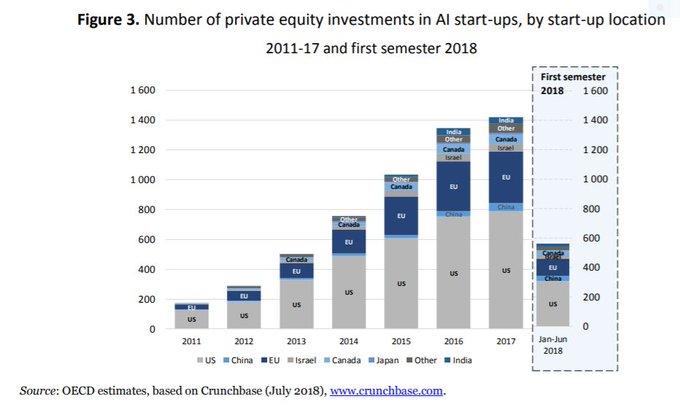
Closing the Investment Gap for Artificial Intelligence and Blockchain in Europe
 5 min
5 min
Closing the Investment Gap for Artificial Intelligence and Blockchain in Europe
We live in a time when new technologies like blockchain , AI , big data and the Internet of Things are transforming all sectors of the economy. Driverless cars, on-demand ride-sharing services, entertainment content platforms, image and facial recognition software, instantaneous translation and many more innovations have all resulted from start-ups in deep tech - technology that relies on long-term scientific research and advanced engineering , and may take some years to reach the market.
But disruptive technologies tend to face substantial challenges when seeking the finance to scale up, especially because most investors do not have the right technical expertise to assess the market prospects of the different technological solutions. They consider digital innovations, such as AI and blockchain as too complex, and thus shy away from investments in these strategic areas. They need to know the track record of the start-up, the collateral and revenue prospects it can offer, and the extent to which it is dependent on obtaining intellectual property rights. They may prefer to stay with more traditional industries.
This challenge is particularly acute for Europe. For example, since 2011, two thirds of global equity investment in AI has gone to the US: this is fully consistent with the US's overall strong position in the global venture capital market. Europe has made steady progress, with its share of global equity in AI growing from a mere 1% in 2013 to 8% in 2017. At the same time, however, China increased its share from 3% in 2015 to a whopping 36% in 2017. An OECD report provides more detailed insights into these figures. Overall venture capital investment is growing rapidly in Europe (from € 5 billion in 2013 to € 25 billion in 2018), but it remains limited compared with the US, where the market is approximately 5 times larger. There is a growing investment gap between Europe, North America and China in key strategic technologies like AI, blockchain, 5G and quantum computing .

Bridging the investment gap
However, when we look at investment in blockchain technologies, the investment gap for deep tech start-ups between Europe and the US is significantly smaller. While most investments in blockchain start-ups are directed at US companies with a total of € 4.4 billion (33%), European companies have attracted a solid € 2.9 billion (22%) and China follows with a total of € 2.8 billion (21 %). One of the underlying reasons is that, between 2009 and 2018, European blockchain start-ups made far more use of alternative forms of finance than their US counterparts. For example, European startups obtained a large amount of funding through what it is known as “initial coin offerings”, an innovative way of raising money from the public, using virtual coins or tokens. In this way, they managed to raise almost 60% of their total financing, while the equivalent figure for US blockchain start-ups did not exceed 18%.
The European institutions want to build on this promising trend, and to support the development of a dynamic EU-wide innovation ecosystem. In particular, the European Commission, in collaboration with the European Investment Fund (EIF), has created the first dedicated EU equity investment fund for AI and blockchain technologies.
This EU investment fund aims to support and leverage investments in highly innovative start-ups and tech companies. In the first phase, the total expected investment volume is € 300-400 million for 2020, with a contribution from the Commission and the EIF of € 100 million and the rest being leveraged from venture capital funds. Looking ahead, the plan is to scale up the investment fund under the InvestEU program, starting in 2021 with an estimated investment volume of approximately € 1-2 billion.
Bringing innovators and investors together
We are organizing follow-up activities for all stakeholders to take a deep dive into the fund's objectives with the blockchain global community, and to discuss ways to leverage it to unlock additional financing from EU Member States and private investors, as well as future scale- up plans.
Key questions for enabling the increased investments in AI and blockchain technologies in Europe remain:
-
- How can we close the information gap between innovators and investors?
- What innovations in finance are needed to be able to react to the rapid technological changes and to service the financing needs of deep tech companies?
- How can we close the investment gap for deep tech start-ups in Europe?
- From an international perspective, what lessons can be learned?
- What role do public financial institutions, such as the European Investment Bank, the European Investment Fund, the European Bank for Reconstruction and Development or the World Bank play in supporting the financing of digital innovations?









 English
English
 Français
Français
 Deutsch
Deutsch
 Italiano
Italiano
 Español
Español



 Contribuisci
Contribuisci








 Puoi sostenere i tuoi scrittori preferiti
Puoi sostenere i tuoi scrittori preferiti





